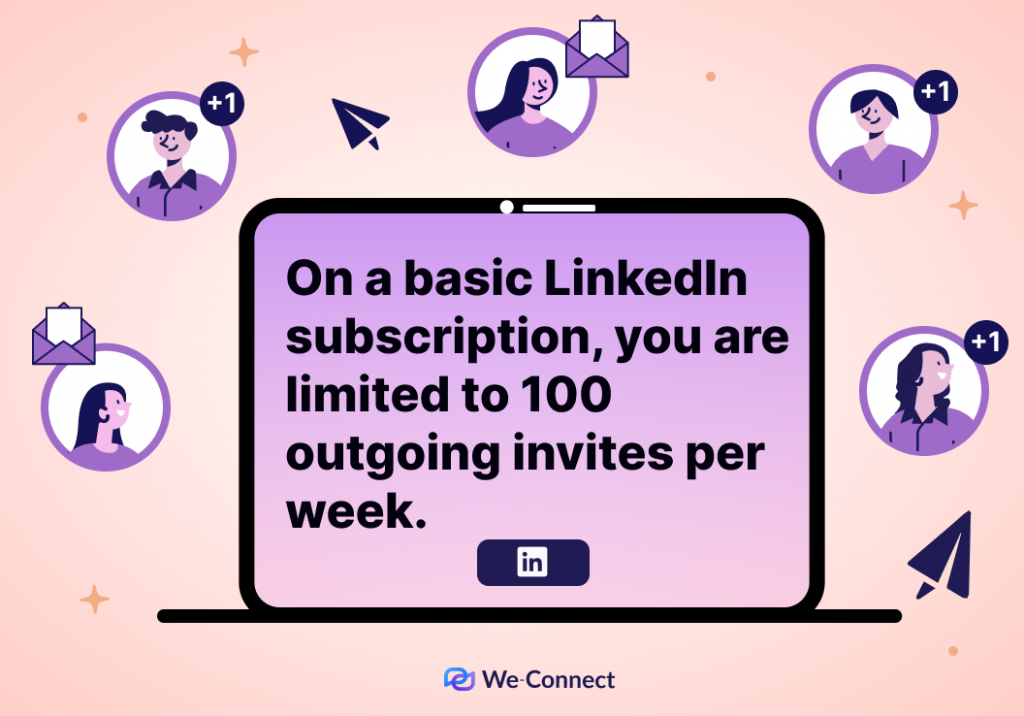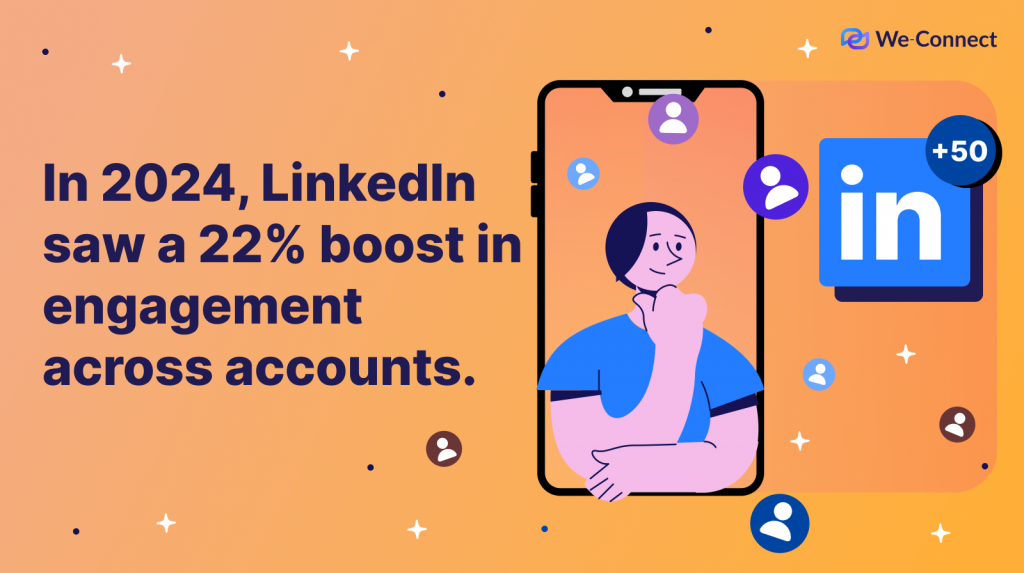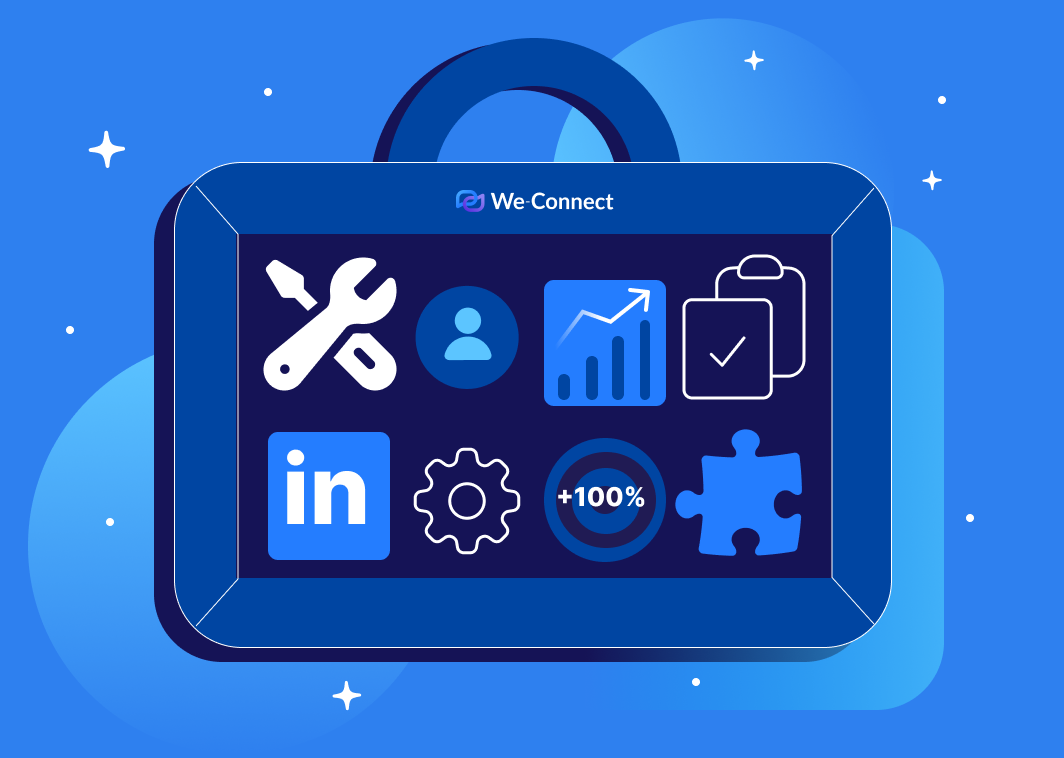Whether you’re running automated LinkedIn marketing campaigns or managing small-scale manual outreach, who you target is just as important as what you say. On LinkedIn, targeting can be broken down into any place where contacts can be found. This includes LinkedIn searches, company pages, groups, and events.
In this article, we’ll explore tips and strategies to optimize your LinkedIn targeting–discussing limitations and high points. We’ll share how to refine your search criteria, use relevant keywords, and leverage LinkedIn-specific features to find the ideal contacts.
What Are LinkedIn’s Search Limitations?
Before we dive into the tips, it’s crucial to understand how many searches you can perform on LinkedIn. Here’s an overview of the limits based on each account type:
- Free LinkedIn: Free LinkedIn users have a constrained search limit, with a maximum of 1,000 contacts per search. This translates to a limit of 40 pages, each displaying 25 contacts per page.
- Sales Navigator: Sales Navigator users can conduct searches with a maximum of 2,500 contacts per search. This means 100 pages, with 25 contacts displayed per page.
- LinkedIn Recruiter: LinkedIn Recruiter users have a limit of 2,000 contacts per search. Additionally, Recruiter unlocks 20 specific search filters.
Something else to know: if you’re on a free LinkedIn plan, there’s also a monthly search limit. Unfortunately, this is based on account usage and can vary based on the number of messages you send and searches you perform.

How To Improve Targeting On LinkedIn
You can do a few things to make the most of targeting on LinkedIn. Even if you’re not limited by LinkedIn’s free search limit, enacting the tips below will help you save time and provide better results for your outreach efforts.
Refine Search Criteria with Advanced Filters
The key to successful LinkedIn targeting lies in precise and targeted criteria. By carefully defining your ideal target audience, you can significantly improve the quality of your search results. Some search filters we recommend using for precise targeting include:
- Geography: Target specific cities or regions to focus your outreach on relevant markets.
- Industry: Identify industries that align with your business goals and focus on professionals within those sectors.
- Company size: Filter by company size to target businesses of a specific scale, whether small startups or large corporations.
- Job title: Use precise job titles to narrow your search and ensure accuracy (you can filter by job title within We-Connect).
- School: Target individuals who attended specific schools or universities.
- Previous company: Find people who worked at specific companies–maybe one with whom you have a previous relationship.
- Annual revenue: Filter by a company’s annual revenue to target businesses at a certain point.
Ready for the sales breakthrough you’ve been looking for? Your social selling index might have the key you’ve been looking for.
Include Relevant Keywords
LinkedIn allows searches to be filtered by keywords. By employing specific and relevant keywords, you can significantly narrow your search results and create a better-targeted list of contacts.
Here are some tips to optimize your keyword search strategy on LinkedIn:
- Be specific: Instead of using broad terms like “marketing,” use more precise keywords such as “content marketing” or “social media marketing.” In short, the more specific your keywords, the more accurate your search results will be.
- Think like a marketer: Consider the language marketers use to describe an ideal customer profile or job description. This will help you identify relevant keywords to include in your search.
- Try variations of keywords: Broaden your search using synonyms of the keywords you’re targeting. For example, instead of searching for “marketing manager,” try “marketing director” or “marketing consultant.”
Harness the Power of “People You May Know”
While outside of LinkedIn search, the ‘People You May Know’ feature is a valuable tool for expanding your professional network and finding new contacts to target. Under ‘People You May Know,’ LinkedIn suggests contacts based on shared connections, mutual groups or companies, and anyone imported from your connected email account.
To maximize the effectiveness of this feature, there are a few things we recommend:
- Review suggestions regularly: The “People You May Know” section is updated frequently. Therefore, check and connect with people who seem relevant to your professional goals regularly.
- Customize your network settings: By adjusting your network settings, you can influence the types of suggestions LinkedIn provides. Consider the ideal industry, location, and desired connections for your business goals.
- Leverage mutual connections: When sending connection requests, mention a mutual connection to increase your chances of acceptance. This can help you stand out from the crowd when selling or marketing a product/service.

Leveraging LinkedIn Company Pages
You can find a wide list of contacts on a LinkedIn company page. Typically, these are people who currently or previously worked at the company you’re viewing. This can be a goldmine for both marketers and recruiters looking to connect with a specific audience.
Here are some tips on how to leverage company pages for effective networking:
- Identify key decision-makers: If you’re looking to pitch, search for senior executives, team leads, and other key decision-makers within the company.
- Find alumni: Connect with former employees who may have moved on to other companies or industries. They can provide valuable insights, referrals, and potential job opportunities.
- Target specific departments: If you’re looking to connect with people in a particular department, such as marketing or sales, you can filter your search results accordingly.
Find Engaged Contacts in LinkedIn Groups
LinkedIn Groups are a great way to connect with like-minded professionals, share knowledge, and participate in industry discussions. It’s also a powerful way to find an engaged audience interested in your service or product. Here’s how you can get the most out of LinkedIn Groups:
- Identify relevant groups: Join groups that align with your target audience’s interests and needs.
- Engage Actively: Participate in discussions, share valuable content, and answer questions.
- Build Relationships: Connect with group members who share your interests and goals.
- Monitor Group Activity: Keep track of the most active members and identify potential leads.
Maximizing the Potential of LinkedIn Events
LinkedIn Events offer a unique opportunity to connect with like-minded professionals, learn from industry experts, and generate valuable leads. By effectively leveraging these events, you can significantly expand your network and achieve your business goals.
- Identify your target audience: Before attending a LinkedIn Event, clearly define your ideal attendee. Consider factors such as their job title, industry, and company size. This will help you focus your efforts on the most relevant connections.
- Leverage the event platform: LinkedIn provides valuable tools to connect with attendees. Use the platform’s messaging feature to introduce yourself to potential contacts, join group chats to discuss specific topics, and participate in live Q&A sessions to share your insights and ask questions.
- Follow-up after the event: After the event, take the time to follow up with your new contacts. Send personalized connection requests, share relevant content, and schedule follow-up meetings to nurture your relationships.

Conclusion
By understanding LinkedIn’s search limitations and implementing the tips in this article, you can significantly improve your search results and connect with your target audience. Remember to refine your search criteria, use relevant keywords, leverage LinkedIn’s features, and follow up with your contacts to maximize your success on LinkedIn.
